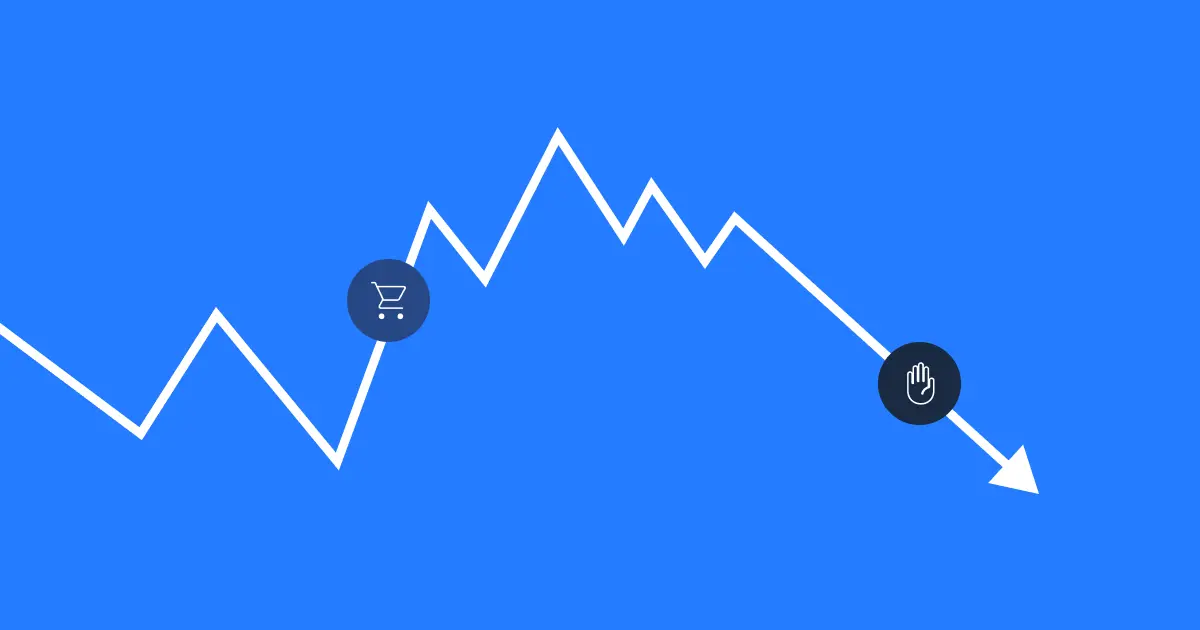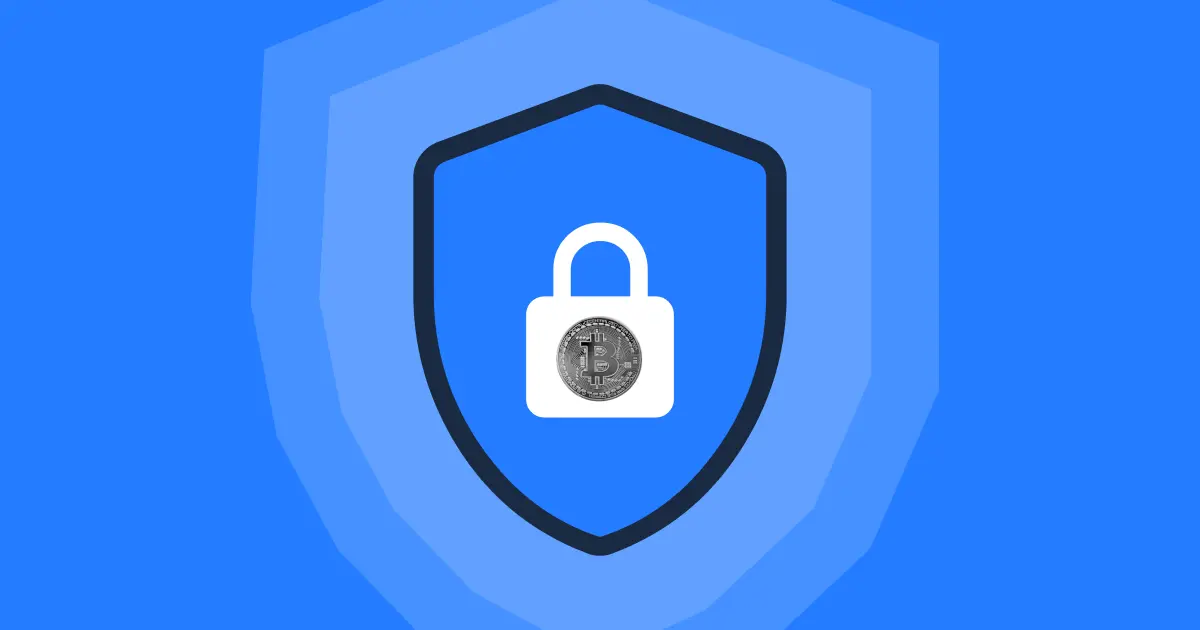Debunking The Most Common Crypto Misconceptions in 2024 Cryptocurrency and blockchain technology...

It is a truth universally acknowledged that investing in crypto can carry distinct risks than investing in conventional securities. However, what people typically misunderstand is the fact that the risks of investing in traditional assets and those of crypto assets are in no way comparable. These asset classes have entirely distinct characteristics, so they should be assessed appropriately.
Unlike real, speculative assets imply an inherent risk that an investor may lose both interest and principal. Logically, as many want to play it safe, they are avoiding high-risk investments at all costs. Indeed, speculative investments are challenging to predict. But, though they may result in losses, they may also promise significant gains.
The crypto market belongs to that speculative category. Returns can become unexpectedly high or saddeningly low in quite short periods of time. Just think about Bitcoin (BTC) — from as low as $4,000 in March 2020, it reached a whopping $69,000 in November 2021, but then significantly dropped to $16,000 a year later.
There are several reasons behind such price volatility. Possibly the main one is that the asset class is relatively new, evolving at a high speed. Plus, it’s not fully regulated, leading people to approach it with caution.
This by no means implies that cryptocurrencies aren’t worth investing in. Quite the contrary, with the right management in crypto trading, it’s possible to secure lucrative profits.
Table of contents
Upon mentioning cryptocurrency risks, the first two things that may pop into one’s mind are market volatility and regulation. However, these are not the only ones, as liquidity and counterparty risks can affect the whole crypto asset class.
Cryptocurrency prices tend to oscillate wildly and abruptly, sometimes even within a single day. It’s precisely the volatility that makes it difficult to forecast the future value of a specific cryptocurrency.
Since the cryptocurrency market is very speculative, sentiment and hype may influence prices more than underlying facts. Price bubbles and crashes may result from this, leading to considerable losses for buyers who purchased at the peak of the market.
Speaking of regulatory risks, since cryptocurrency is a new asset class, governments all over the world are still trying to figure out how to control cryptocurrencies. Due to this, laws and regulations are prone to frequent changes. Cryptocurrencies are not accepted as legal currency in some nations, and their use is either regulated or outlawed.
The value of cryptocurrencies can also be significantly impacted by regulatory shifts. For instance, if a government outlawed the use of cryptocurrencies, there would be less of a market for them and their worth would probably fall.
Liquidity can be a big problem as crypto is not traded on regulated platforms. Sometimes it can be difficult to buy or sell a specific coin or token, particularly if it is obscure or has little trading activity.
The possibility that one party to a transaction will not meet their obligations is known as the “counterparty risk.” For traders and investors who use cryptocurrency exchanges or other third-party service providers, this can pose a huge risk.
Namely, they may lose their assets or encounter problems with getting their money if a crypto platform goes out of business or is compromised. There have been instances when crypto exchanges have also been accused of fraud or poor administration, as was the case with the FTX crypto exchange, causing investors to suffer huge losses.
Any investor should diversify their portfolio. However, when it comes to cryptocurrencies, this is a crypto risk management strategy of particular importance. A balanced portfolio is one of the best protection against market volatility. Therefore, try to include a range of different cryptocurrencies. In case one cryptocurrency starts exhibiting a downward trend, your portfolio might not be affected drastically.
But how to diversify a portfolio?

The first step is to choose coins with different use cases. For instance, while Ethereum is mainly used for creating decentralized applications, Bitcoin is frequently used as both a store of value and a medium of exchange. As a result, having both Bitcoin and Ethereum in a portfolio would give one access to a variety of use cases within the cryptocurrency environment.
It’s crucial to spread not only across use cases but also between different market capitalizations. Although smaller-cap coins have more potential for growth, large-cap coins like Bitcoin and Ethereum are typically less volatile. Therefore, for better risk management in crypto trading, a balanced portfolio should contain a mixture of cryptocurrencies with big and small market caps.
It can be beneficial to diversify among various areas of the crypto industry as well. DeFi, NFTs, and blockchain-based gaming are areas of the cryptocurrency industry that are presently expanding. It may be possible to reduce the dangers brought on by sector-specific volatility by investing in a variety of cryptocurrencies.
In trading and investing, stop-loss orders are a crucial instrument for managing risk. By selling a security when it hits a set price, they enable investors to automatically limit losses and secure profits. Traders can limit their potential losses and protect themselves from unexpected market declines by setting a stop-loss order. They can also lock in gains from successful transactions.
On the other hand, if the price of security starts dropping below a specific threshold, a stop-loss order tells a trading platform to immediately sell it. The investor determines this level, which is usually lower than the going rate. If the value of the asset continues to drop, the stop-loss order will shield the investor from further losses.
Market and limit orders are the two most frequent stop-loss orders. The former instructs a trading platform to sell the asset immediately at the highest price available. This can be of great help in volatile marketplaces where prices are constantly changing. The latter tells the platform to sell the security at the specified price. The limit order may prevent an investor from losing their money when the asset price starts declining.

It is significant to remember that stop-loss orders are not always reliable, as they can be affected by market instability and liquidity problems. Sometimes a security’s price will suddenly drop, evading the stop-loss order and causing a bigger loss than expected. Furthermore, stop-loss orders might not be carried out if there is insufficient market liquidity or if the price of the security changes too rapidly.
Including stablecoins in your portfolio is a prudent step toward good crypto risk management. Due to their peg to a fiat currency and resistance to market volatility, stablecoins are a powerful tool in risk mitigation.
Stablecoins can provide a method for traders and investors to lessen their exposure to the risks involved in trading cryptocurrencies. Traders can enter and exit positions without being concerned about price changes that may occur in other cryptocurrencies by using stablecoins as a trading pair.
They can also help to lower the risk involved in international trade. When working with currencies from emerging markets, traditional fiat currencies are prone to value swings. Stablecoins can provide a more stable value to help with lowering the risk of currency oscillations.
As a part of solid risk management in crypto trading, you need to take proper storing your coins and tokens into account.
In order to access cryptocurrencies and other digital assets, private keys are typically stored offline in a secure way using “cold storage solutions.” This is carried out to guard against unapproved access, hacking efforts, and other security lapses that might jeopardize the security of your digital assets. Cold storage options come in many forms, including hardware wallets, paper wallets, and even dedicated USB drives.
Private keys are kept on physical devices called hardware wallets, and they can only be accessed with a PIN number or password. These gadgets are very safe and provide protection against malware and other internet dangers. Paper wallets are nothing more than a printed replica of your private key that is kept offline and out of the reach of possible attackers. Although inexpensive and simple to make, paper wallets need to be handled carefully to avoid loss or harm.

The degree of privacy and security provided by the solution is a crucial factor to take into account when selecting a cold storage solution. To further secure your private keys from unauthorized access, some hardware wallets, for instance, offer sophisticated encryption features like multi-factor authentication and biometric verification.
It is essential to adhere to best practices for security when setting up a cold storage solution. Make strong and distinctive passwords, store backup copies of your private keys in a secure location, and update your hardware and software regularly. This way you’ll make sure you are utilizing the most recent security features.
Although it is still a relatively new idea in the world of cryptocurrencies, crypto insurance is rapidly emerging as a vital crypto risk management tool for people and businesses looking to safeguard their digital assets. In effect, cryptocurrency insurance covers losses brought on by theft, hacking, or other security flaws.
One of the main advantages of crypto insurance is that it can give investors and companies that own large quantities of digital assets peace of mind. Understanding that there is a safety net in place can reduce the risks of investing in cryptocurrencies and help avoid panic selling during volatile times.
Crypto insurance also has the potential to promote institutional usage of cryptocurrencies. Due to the lack of available insurance coverage, many significant financial institutions have been reluctant to engage in digital assets. But it’s likely that conventional financial institutions will embrace cryptocurrencies more widely as more insurance companies start to provide coverage for them.
Continuous monitoring and reevaluation are essential in crypto risk management for adjusting to the volatile landscape as the crypto market keeps growing. This is one of the main reasons why continuous monitoring is so important.
It can be difficult to tell whether a cryptocurrency is a decent investment because its value can change significantly in a short period of time. Investors can, however, spot trends and decide when to purchase or sell cryptocurrencies by keeping an eye on the market and reevaluating the performance of cryptocurrencies frequently.
Cybersecurity is another segment that needs to be observed closely. Cyberattacks on crypto exchanges and wallets have the potential to wipe out anyone’s money. Thus, watching and reevaluation are essential to ensuring that cybersecurity measures are current and efficient in protecting investors’ assets as new threats arise.
The regulatory environment that surrounds cryptocurrencies is another factor that makes continuous monitoring essential. Governments from all over the globe are still debating how to control this developing market. As a result, laws and rules are subject to quick change, so it’s important to keep up with the most recent advancements. Investors can stay out of trouble legally and in compliance with rules by doing this.
Latest Articles
Debunking The Most Common Crypto Misconceptions in 2024 Cryptocurrency and blockchain technology...
Veli Secures Investment from DSl Angel Investor Network We are thrilled to...
How Veli Transformed Vezovišek & Partnerji Into a Digital Asset Powerhouse Cryptocurrencies,...